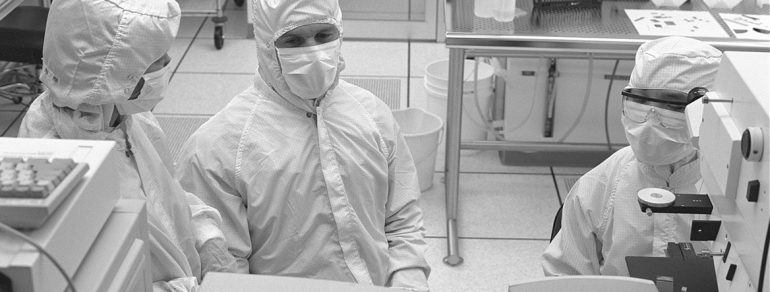Monolayer Graphene on Copper
Graphene and other ultrathin materials are increasingly available to developers and researchers in a growing base of applications. This largely stems from concerted efforts to functionalize single- and few-layer materials through greater technical ingenuity. Today, manufacturers can engineer high-purity monolayer graphene via chemical vapor deposition (CVD) on a choice of growth substrates. CVD synthesis of
Applications of Graphene Gas Sensors
Sensor manufacturers are routinely innovating their products to drive greater precision in terms of signal detection and device functionality. As many sensors are designed to detect and identify minute or relatively weak indicators, small changes in configuration or material can have a dramatic impact on their performance. Nowhere is this more prevalent than in the
Graphene Sensors in COVID-19 Tests
Coronavirus (COVID-19) tests have been at the forefront of many peoples minds as global industries struggle to realign in the wake of the ensuing pandemic. One of the greatest challenges in combating the novel coronavirus – more accurately classified as severe acute respiratory syndrome coronavirus-2, or SARS-CoV-2 – is screening those with flu-like symptoms to
Graphene Wearables: Exploring Next-Gen Electronics
Wearable technology refers to any class of electronic items that can be comfortably worn on the body. This covers an ever-growing range of application and product segments, from health and fitness trackers to immersive infotainment systems. They are governed by many of the same principles and trends as other electronics markets, namely extremely high consumer
The Working Principles of Graphene Strain Sensors
Graphene strain sensors (or strain gauges) are pioneering electromechanical strain measurements on the microscale, enabling the detection of infinitesimal strain values with extremely high gauge factors. These unprecedented performance levels can be exploited to quantify a range of strain types including: bending; compressive and tensile strain; and torsion. Owing to the comparative immaturity of graphene-based
Guide to Graphene Sensors
A new level of sensitivity; this was the promise of researchers and early-adopters of monomolecular materials when it came to graphene sensors. Using graphene as a sensor – whether as an active sensing material, a substrate, or a transistor – would enable previously unfathomable levels of versatility and ultra-sensitivity in a virtually limitless range of
How Would Graphene-Based DNA Biosensors Work?
Biosensors are advanced analytical components designed to detect biological analytes via electro- or physicochemical interactions. Innovations in coupling bioactive interfaces to appropriate transducer elements in recent years, especially among monolayer material offerings, have yielded a dramatic increase in the range of high sensitivity biosensors available to clinical and industrial users. Among these is a novel
Single-Layer Graphene as a Sensor
Single-layer graphene has entered the sensor market after years of intensive research and development (R&D). With novel electronic properties and unprecedented tactility, sensitivity and utility in design, graphene sheets of atomic thickness represent a significant step forward in modern sensing technologies. Yet, there are still barriers to widespread market saturation. These can only be overcome
Bio Applications of Graphene Sensors
Two-dimensional (2D) materials are enabling manufacturers and researchers to revolutionize sensing devices and acquire extremely precise data from challenging environments. Graphene still occupies the leading-edge in the commercial and industrial realization of 2D materials. With tremendous theoretical electrical conductivity, mechanical flexibility, optical transparency, and biocompatibility, sensing elements based on graphene are frequently considered for a
An Introduction to Graphene Sensors
Graphene is often flagged as a gateway material for next-generation technologies in an impossibly broad range of application areas. With a comprehensive variety of outstanding properties (electrical, mechanical, thermal, etc.), graphene has been tipped to revolutionize practically every market on the planet, from construction to water filtration. Yet the reality is that many practical applications








